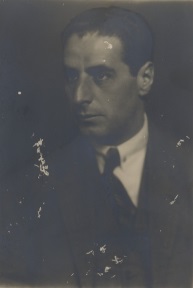
Ernst Toch was an Austrian composer of classical music and film scores. He sought throughout his life to introduce new approaches to music.

Robert Fuchs was an Austrian composer and music teacher. As Professor of music theory at the Vienna Conservatory, Fuchs taught many notable composers, while he was himself a highly regarded composer in his lifetime.

Hilding Constantin Rosenberg was a Swedish composer and conductor. He is commonly regarded as the first Swedish modernist composer, and one of the most influential figures in 20th-century classical music in Sweden.
Arnold Atkinson Cooke was a British composer.

Bernhard Heinrich Romberg was a German cellist and composer.

Robin Greville Holloway is an English composer, academic and writer.

Hans Gál OBE was an Austrian composer, pedagogue, musicologist, and author, who emigrated to the United Kingdom in 1938.

Jaroslav Řídký was a Czech composer, conductor, harpist, and music teacher.
Olli Mustonen is a Finnish pianist, conductor, and composer.
Zdeněk Lukáš was a prolific Czech composer who authored over 330 works. He graduated from a teachers' college and worked as a teacher from 1953 to 1963. He was a musical editor and program director at the National Broadcasting Company in Pilsen and conducted the Česká píseň, a choir in Pilsen.
Victor Legley was a Belgian violist and composer of classical music, of French birth. He first studied in Ypres with Lionel Blomme (1897–1984). In 1935 he matriculated at the Royal Conservatory in Brussels, and there won awards in the study of viola, fugue, counterpoint and chamber music.
Gary Kulesha is a Canadian composer, pianist, conductor, and educator. Since 1995, he has been Composer Advisor to the Toronto Symphony Orchestra. He has been Composer-in-Residence with the Kitchener-Waterloo Symphony (1988–1992) and the Canadian Opera Company (1993–1995). He was awarded the National Arts Centre Orchestra Composer Award in 2002. He currently teaches on the music faculty at the University of Toronto.

The trumpet repertoire consists of solo literature and orchestral or, more commonly, band parts written for the trumpet. Tracings its origins to 1500 BC, the trumpet is a musical instrument with the highest register in the brass family.
In music, a duodecet—sometimes duodectet, or duodecimette—is a composition which requires twelve musicians for a performance, or a musical group that consists of twelve people. In jazz, such a group of twelve players is sometimes called a "twelvetet". The corresponding German word is Duodezett. The French equivalent form, douzetuor, is virtually unknown. Unlike some other musical ensembles such as the string quartet, there is no established or standard set of instruments in a duodecet.









